The GIGABYTE Server MW31-SP0 Motherboard Review: A Quick Look at C236
by Ian Cutress on April 21, 2016 10:00 AM EST- Posted in
- Motherboards
- Gigabyte
- Xeon
- Enterprise
- C236
GIGABYTE Server MW31-SP0 BIOS
When examining server focused motherboards over the past few years, my expectations on what we find in the BIOS is often muted. The server/workstation market has not particularly picked up the mantle for a graphical interface in the same way the consumer market has, mostly because the function of the motherboard is more important than the user experience. Even still, when there’s two separate motherboard BIOS divisions within the same building, one for consumer and one for workstation, one would assume that there’s some transfer of knowledge, right? Either way, the BIOS for the MW31-SP0 stands as a simple black and blue-on-gray similar to the pre-graphical days.
Because the BIOS here is all about function, the main screens are the Advanced and Chipset tabs in order to adjust controls and features.
The Advanced tab is all about control, deciding about CPU power states, SATA modes, Thunderbolt, NVMe, BIOS Guard and network options.
For users interesting in pairing the motherboard with Xeon Phi, the ‘Above 4GB MMIO’ option in the PCI Subsystem Settings above needs to be enabled – this is disabled by default.
The MW31-SP0 eschews any form of fan control, either in BIOS or software. The closest to it is this PC Health menu in the Advanced tab, showing temperatures, fan speeds and voltages.
While the Advanced tab has options for SATA and networking, Audio and DRAM options are through the Chipset Tab. In order to get to DRAM, we go through the System Agent configuration option into Memory:
There are few options relating to speed, except the Maximum Memory Frequency can be adjusted when using a slower memory kit.
Aside from this final Boot Override setting, nothing else of much interest happens in the BIOS. There is no tool to take screenshots (hence these camera pictures), no easy tool for updating the BIOS, no fan control, and no real attempt to improve the ease of use on the interface.
The thing is, this interface is typically what motherboard manufacturers start with, and then they move options about, enable/disable options, create graphics to align with the options, and adjust when certain keypresses do things. It’s not a big leap to ensure some clarity in these options. There’s also another interesting thing – because we had to use Win10 for review rather than our usual Win7 image, using the ‘reset to UEFI’ option through the advanced options gave a completely different set of BIOS options, all in one long configuration menu. That being said, again nothing much was of interest.


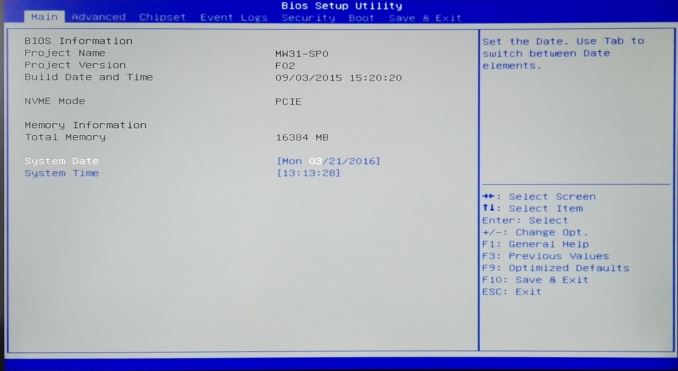
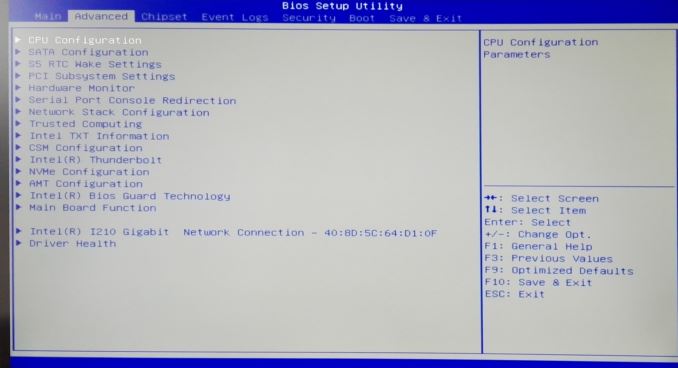
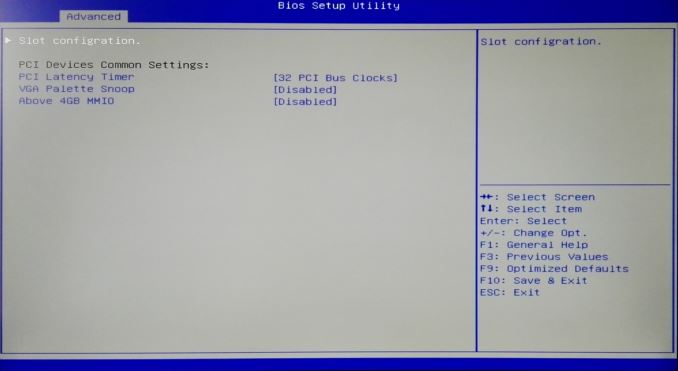
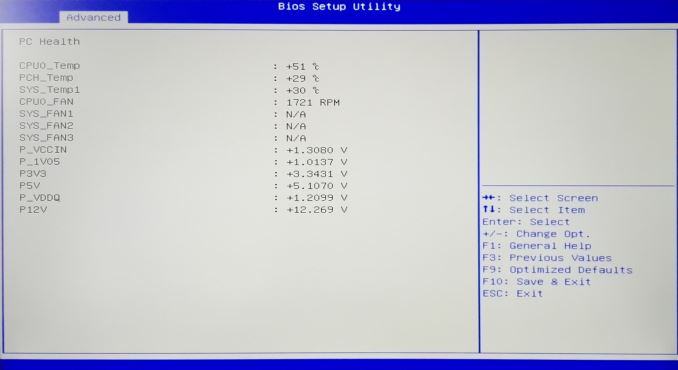
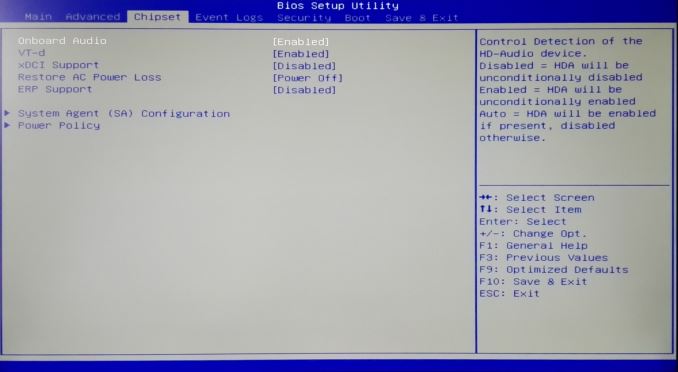
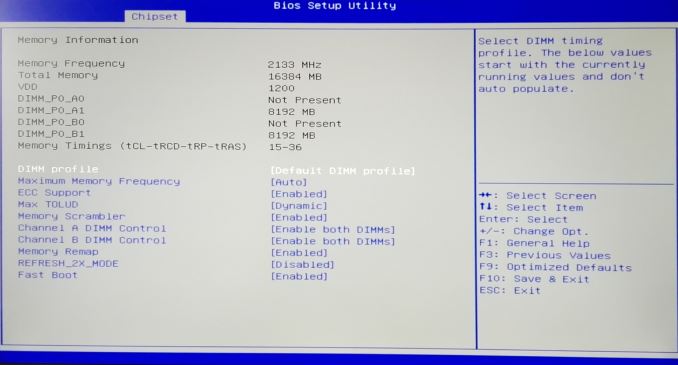

 Main_thumb.jpg)
 Advanced_thumb.jpg)
 CPU Config_thumb.jpg)
 CPU Config_thumb.jpg)
 SATA_thumb.jpg)
 Wake_thumb.jpg)








28 Comments
View All Comments
Samus - Friday, April 22, 2016 - link
C232 didn't support vPro? Wow, talk about lack of foresight by Intel...they've been trying to push that as a corporate platform basically since Sandybridge and it wasn't even supported on their server platform?SFNR1 - Friday, April 22, 2016 - link
HP uses iLO in their E3 and Intel has the RMM4 for that.Samus - Friday, April 22, 2016 - link
The problem with iLO is all the entry level servers (non-E5) have iLO light which is kind of a management joke. Most of the remote management tools require iLO advanced which can be purchased as a license for some servers but not the ML110 because the eprom isn't large enough for the software. Even then, and this is hard for me to admit because in an HP guy, Dell's iDRAC is all around better, and free, like vPro. I'm just surprised vPro was never available on C232. Generally I use remoteKVM for management so this is all moot unless I actually need to hard power off equipment remotely and since I don't manage rack servers across the country that has never come up. Only once in my career have I had to jump in the car and drive somewhere to power a server back on because I accidentally shut it down lol.rtho782 - Friday, April 22, 2016 - link
I'd like to see a comparison of SLI performance between this, with the PLX switch, and other boards that split x8/x8.I know this has been done before but nothing with modern CPUs etc.
Vidmo - Friday, April 22, 2016 - link
You should also take a look at the Supermicro X11SAT-F as its a much better board than this one or even the Gigabyte X170-Extreme ECC.http://www.supermicro.com/products/motherboard/Xeo...
snakyjake - Sunday, April 24, 2016 - link
Will using software RAID with the dual SATA controllers be an advantage, disadvantage, or no affect?milkod2001 - Monday, April 25, 2016 - link
Are there any mini atx server boards with build in 14nm Atoms/Celerons/Pentium, ECC support for NAS units out there?atlantico - Friday, April 29, 2016 - link
Gigabyte, always the last on my list for components. Ugly mobos, terribad BIOS and "ATi CrossfireX support" printed on the mobo. Why not the 3DFX SLI? Dumb and ultimately 3rd rate Gigabyte.The sad thing is that Gigabyte isn't all that much cheaper than others, except in quality.